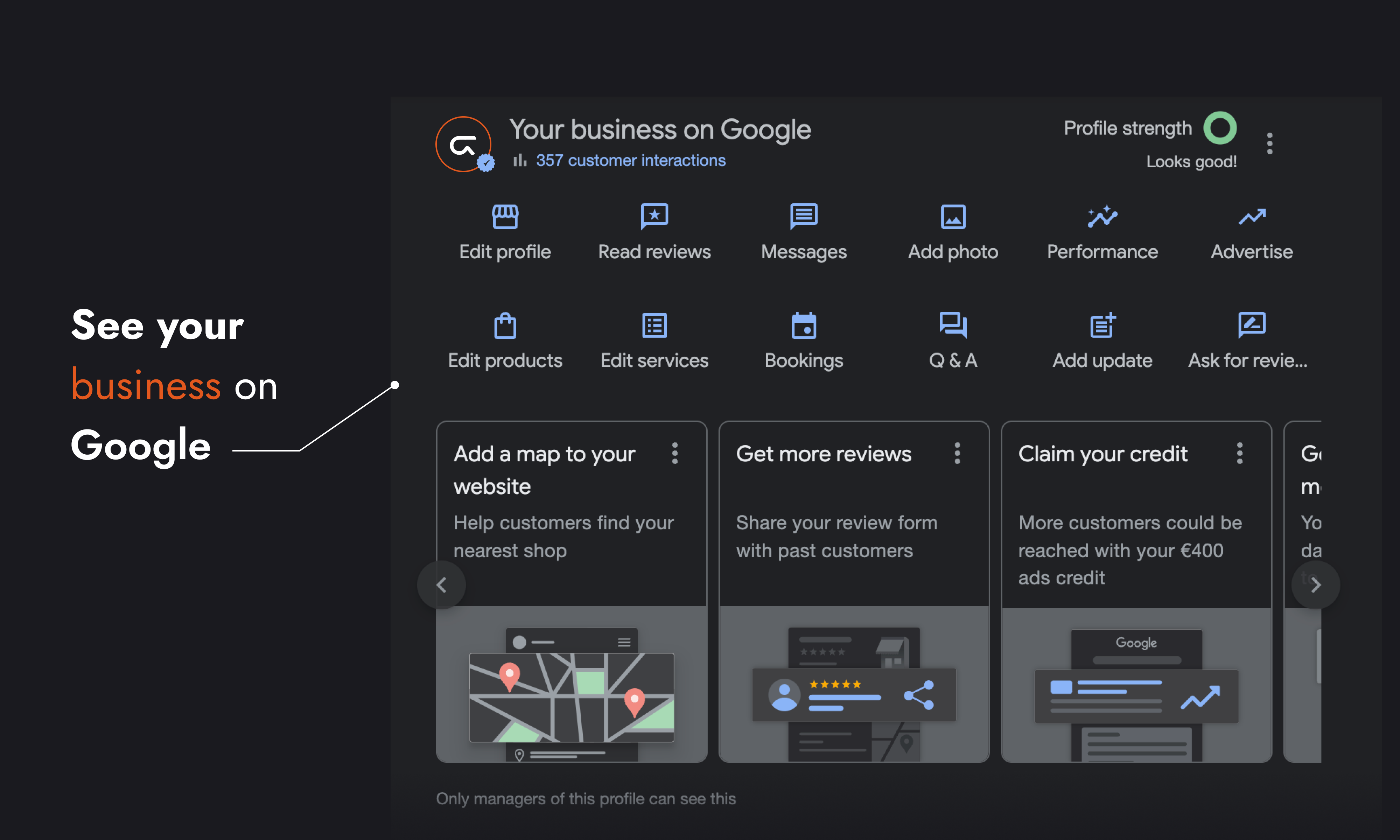In a world where online presence is crucial, understanding what your competitors are doing and how you can differentiate yourself is essential. Conducting your competitive analysis step by step, starting small, will quickly grow into a comprehensive analysis.
Understanding Competitive Positioning?
But what does competitive positioning actually mean? It refers to the position of your website or brand compared to your competitors in search engine results.
The Importance of Competitive Analysis for Your Business
Competitive analysis has always been important, and its value only increases over time. By keeping an eye on the competition, trends in the landscape can be identified, and adjustments to the course can be made in a timely manner if necessary.
Conducting your competitive analysis step by step, starting small, will quickly grow into a broad analysis. Identifying weaknesses in other companies can provide insights that you can improve upon for your online presence. This happens for the following reasons:
Why You Should Always Stay Ahead of Your Competition
If you have a business online, a website is a must these days. CBS even stated in 2018 that nearly all businesses (94%) have their own website. With so many companies being present online, competition is becoming fiercer.
Competing in an Ever-Changing Internet Landscape
The reason it's important to keep a close eye on your competitors is because the internet and its functionalities are constantly changing and evolving. If you know how your competitors are using these new features, you can learn from them and apply it to your own business.
Step 1. Identify Your SEO Competitors
The first thing you need to know here is the distinction between your business niche competitors and your SEO competitors. SEO competitors and SERP competitors occupy valuable digital space on the search engine results page, making other businesses less visible.
For example, if you have an online shop selling healthy snacks and you want to rank higher for "sports meals," your SERP competitors are likely to be other dietitians, health blogs, and magazines. Although they may not sell exactly the same products, they are still competing for the attention of users on the search results page.
If your goal is to outperform your competitors on the search results page, it's important to first identify who they are. Use your favorite keyword research and rank tracking tools to gain insight into competitors already ranking for the same keywords as your domain and for the keywords you also want to rank for. This will give you valuable information to understand your competitive position and adjust your SEO strategy.
Keyword Research Tools
Google Search Console, SEMrush, Ahrefs, and Moz are the best options. The beauty is that all these tools offer a free version. These tools can help with keyword research, analyzing backlinks, and tracking your keyword rankings in search engines. Whichever tool you use, I recommend going to Google, manually searching for a few of your most important keywords, and carefully reviewing the SERP snippets.
Pro Tip:
Don't just copy your competitors' keyword research and then reproduce their content. Instead, you can gain a competitive advantage by using social media for keyword research. Here's how you can capitalize on what people are searching for on social media and combine it with what they're searching for on Google/Bing.
Step 2. Evaluate the Level of Competition
Once you've found your SERP competitors, you need to see if you can surpass them. In theory, you can beat any competitor, but in some cases, it may require too many resources.
Go back to your favorite keyword research tool that you used in the previous step and pay attention to the following metrics of your competitors:
- Domain Authority (different tools have different names for this metric, but they are all based on the quality and quantity of backlinks)
- Indexing in search engines
- Google rankings
- Backlinks
- Traffic volumes
- Social signals
If you want to beat your competitors, thorough analysis is essential. This may seem complicated at first, but it is key to success. Good technique is crucial here.
Who Conducts the Competitive Analysis?
Naturally, you can conduct the SEO competitive research yourself or have one of your employees do it. But if you're not knowledgeable about it and still have a lot to learn, not only will you spend a lot of time that you could better spend elsewhere, but it could also cost more than you expected. So it might be wise to invest in a professional SEO agency. They know exactly what they're doing and can quickly achieve the best result for you without breaking the bank.
How to choose smart keywords when your website isn't strong enough yet. Think - if the search results page is tough and full of strong websites, and your site is clearly weaker, focus all your attention on easier keywords. Until you get stronger, at least
Step 3. Check the On-Page and Technical SEO of Your Competitors
Before you start optimizing keywords, you need to first check the state of your competitors' on-page and technical SEO and compare it with your website. If you find that your own website is much weaker than your competitors', then you need to first address all on-page and technical issues. This will give you an extra boost to surpass some of your SERP competitors. Run your competitors' websites through your favorite website audit tool (Ahrefs, Screaming Frog, WebSite Auditor, etc.) and compare the results with yours. Pay attention to indexing issues, metadata, PageSpeed, mobile optimization, redirects, and website structure. Focus on improving the aspects where you lag behind the most, first.
Step 4. Find Your Competitors' Top Keywords.
The next step in competitive analysis is to identify the topics your competitors most frequently write about. The idea is quite clear - if many of your SERP competitors cover a certain topic, that search query brings a lot of traffic. Additionally, those covered topics act as a benchmark of high-quality content for Google. To discover these new keywords, perform your target query via a keyword research tool that supports TF-IDF analysis. Pay attention to how many of your SERP competitors are using a keyword and how often.
Step 5. Analyze Competitors' Content
Analyzing competitors' content provides you with important insights on how to optimize your own pages.
Go to Google and type in your target query. Look at the SERP and note:
- SERP features triggered by the search query - this will help you choose the best content format to succeed with the given search query;
- Titles and descriptions of the SERP snippets - how catchy they are;
- Presence of rich snippets in the SERP - if there are many, you should also add schema markup to your page.
Click on a few search results and browse around the page. Check how far they go with the topic and how much text is on it. Also, see if there's anything special on the page - ultimately, you want to have everything they have but with your own twist.
Pro Tip:
I use this trick every day. It's not the full picture, but it tells you 90% of what you need to know about a website. How to check if your competitors appear in search results for your keywords:
Go to Google;
- Type in the search bar the search operator "site:" + your domain
- Below the search bar, you'll see an estimate of how many of your pages are indexed by Google.
Step 6. Analyze Competitors' Backlink Profiles
Backlinks are one of the most important ranking factors, so a backlink audit is part of the SEO competitive analysis. Your content can be perfect, but it won't rank without backlinks. Understanding where your competitors get backlinks from allows you to refine your own backlink strategy and discover new opportunities. Don't just take a quick look. Examine individual links and think, "Why did they link to my competitor, and how can I ensure they link to me? Note: We're talking about dofollow backlinks, i.e., those that pass link juice. They are the target during every backlink outreach campaign. Use a backlink checker tool and run your competitors' websites through it. Pro tip: How to Find Your Competitors' Backlinks
What Happens After You've Gathered All the Facts?
Based on the evaluations you've received from the SEO competitive research, you can now devise your own search engine and online marketing strategy. If you're working with an experienced SEO agency, they'll provide clear advice on what to do.
Conclusion: Why is SEO Competitive Analysis So Important?
Understand the distinction between your business niche competitors and your SEO competitors. By identifying weaknesses in other companies, you can find opportunities to improve your online presence. It also enables you to deploy effective marketing strategies.







.jpeg)



%2520(1).webp)
















